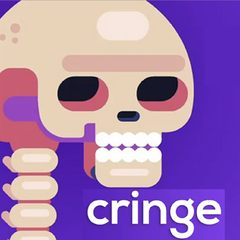-
Posts
24,987 -
Joined
-
Last visited
Awards
This user doesn't have any awards
Profile Information
-
Gender
Male
-
Location
Montreal, Canada
Recent Profile Visitors
22,172 profile views
GoodBytes's Achievements
-
Hibernation needs to be enabled
-

Is WSL as good as a true Linux install?
GoodBytes replied to Gat Pelsinger's topic in Operating Systems
WSL2 is what we use in our development workflow. 0 issue, it's been real solid. We use Ubuntu LTS on it (gets updated over time). Everything we throw at it works perfectly. Out of the box GUI support requires Win11, else you'll need to use a X11 Display Server under Windows. Many popular IDEs for development have WSL integration support for a seamless experience and best performance. It's also best to keep all project files under WSL2 environment for best performance. Use Windows Terminal: https://apps.microsoft.com/detail/9n0dx20hk701 (built-in and default under Win11) It's a modern terminal that supports everything, which the old Command Prompt just doesn't as it was never really updated since the early days of Windows 10 to make it usable... but only that. It needed to be reworked from the ground up, and that is what Windows Terminal is. It opretty much supports everything you expect. Unicode, Emoticons, all types of fonts, font smoothing, panes, tabs, links, and lots more. It is nicely customizable as well. -

WSA is going away, what do I do!?
GoodBytes replied to Invincible Sugar's topic in Operating Systems
We don't know, but I think WSA will remain, but Amazon Store won't be there. At worst, we can probably push in a Pixel phone OS with the latest Android version to WSA to get a newer version of WSA version of Android. Like what you need to do to get Google Store Service support, as MS can't provide it, due to Google. -

Microsoft is "sunsetting" (aka, killing) Windows Subsystem for Android.
GoodBytes replied to Issac Zachary's topic in Windows
The biggest issue is the lack of Google Play Store support (not Microsoft fault). The problem is that even if you sideload apps, due to the deep integration of Google Play Store that apps have with it, most apps just crash when you do certain things, or just don't even start (crash at launch). The only thing one can do is side load a modified Pixel firmware where Google Play Store has been injected inside, and that means that Amazon isn't getting money from app sales (the little that already get), and that means that Amazon isn't interested anymore in supporting WSA. So many Android apps are deeply tied to Google Play Store, and that is the big problem. Only the ones on Amazon App Stores (the very few they are), are coded in a way to support both APIs. Remember that Google Play Store is more than just the Store. They are Google Maps, Tools for Google Apps for telemetry, in-app purchases, Ads, and more. If any app uses any of these things (most does) and has no alternative behavior beside expecting that the device supports Google Play (which is most cases), then the app will just not run. -

android emulator for windows 10.
GoodBytes replied to mrchow19910319's topic in Programs, Apps and Websites
Windows 11 has Android emulator. But out of the box, it doesn't support Google Services. They are guides online to use the image of a Pixel phone to have Google Play service -
Sounds like you don't have the latest version of WSL. It should be fetched from the Store app. OR, this is the first distro that you are installing on the system and so: --import-in-place should be used. wsl --import-in-place Kali "C:\wsl\kali-linux\ext4.vhdx"
-
As per documentation: wsl --import Kali --vhd "C:\wsl\kali-linux\ext4.vhdx" --version 2
-
Just to be sure I understand you. Where did you place your files? Under WSL or outside WSL? WSL2 (I'll focus on "v2" of WSL), can be seen as a fancy VM (specialized for Linux based OSs) where it has deep ties with the OS, allowing you to cross both Linux based OS world and Windows. That said, it is still a VM. If you have files IN WSL2 environment, you can access them through File Explorer, by clicking on the "Linux" item on the navigation bar. If you don't have it, then you are probably under Windows 10. Under which case, you can type "explorer.exe ." (notice the space and the "." after "explorer.exe") under your WSL2 environment, and you'll open File Explorer exactly at that location. It should be a network location. WSL2, as mentioned, is really a VM at the end of the day, that means it has a VHD of some kind. It means that you can export it and import the envirement. This avoids reinstalling/reconfiguring everything. You can use these commands which you execute under Windows (Command Prompt or PowerShell) to do this: https://learn.microsoft.com/en-us/windows/wsl/basic-commands If your files are outside of WSL2 envirement, meaning not under your Linux based distro env, then you can just treat them as any files of your system. The other system WSL envirement will see them just fine. You can view your Windows files under Linux via /mnt/ folder, where you'll have, your drive letters. So, if your files are under Documents, assuming a starts Windows install, it can be accessed via: /mnt/c/Users/<account name>/Documents
-
You can opt-out of the Insider program via Settings panel. However, the build will expire soon (See Windows About panel to know expiry date). Unless your built that you have is match the official build (a small window), a clean install would be required to get the official non-short-expiry build.
-
Contact MS support. Start the "Get Help" app. It has been reported that MS is having activation server issues recently when people do BIOS updates, despite using a MS linked account. Basically, it sees the system as a new one. It just needs to be corrected.
-
They are 3 ways to do this for Windows 10 Create a local account and don't enter a password when asked. For Windows 10/11 and that is to use a MS linked account, and use Windows Hello facial recognition (this is more for laptops, or desktops with a compatible webcam like the Logitech BRIO 4K camera) This one works with Windows 11 as well, and that is to use a MS linked account as normal and use Microsoft's very own utility called "Autologon" to auto-login for you: https://learn.microsoft.com/en-us/sysinternals/downloads/autologon. The utility doesn't need to be installed or running on the back once setup. It simply configures Windows hidden account part to basically starts with your password entered in the field, and auto login for you the moment it gets to the login screen (everything is encrypted, but not a strong encryption and can be retrieved if someone has physical access to the system. Best to use for a home desktop computer. Use Windows Hello for laptops, in the case the laptop is stolen). Your experience will look very similarly as if you had no password on the system when you start it up.
-
Windows 11 requires and is designed for and optimized for: SSDs and eMMC storage (well not technically, but other disk performance requirements force SSDs or eMMC storage, unless some crazy HDD technology comes out, it's a non-HDD you must use to comply with Windows 11 system requirement). Hence why you no longer have any laptops on the market running Windows 11 with an HDD as main drive. Your drive is probably fragmented, or you have network drive/folder shortcut/link somewhere.
-

microsoft edge darkpattern/we track you anyway screen?
GoodBytes replied to wrathofdragon's topic in Windows
Short answer: Edge is Chrome but uses MS services over Googles, consumes a bit less memory and easier on laptop in terms of battery life, has improved touch controls, oh and it has all the needed codecs to play nice with all streaming services, including support for 4K HDR Netflix content, which Google refuses to implement. It also brings some nice unique features, like collection (tab grouping), and easy access via a side panel to Bing Chat (ChatGPT 4 with full online access). Everything can be disabled in the settings panel if you don't care. Edge web browser is packed with options (maybe a bit too much these days). I other words, Chrome with Microsoft touch (good and bad). Google pretty much doesn't care about Chrome, always playing catchup to Edge, or just enjoys the advancements that Microsoft makes to Chromium (where all web browsers using Chromium benefits); Microsoft pushes new features in Edge. I seriously don't see a reason to use Chrome over Edge, beside one preferring Google privacy policy over Microsoft ones (personal preference thing). But yes, under Windows, since Windows 10, everything from Windows will use Edge, even if your default web browser is set to something else. So, search will use Edge. What you are seeing is Edge first time setup screen. I agree there should be "x" and not be full screen like so. I get they want user attention, and the user to take time to read things through and not go "Quick Close! Because I see something unusual". But that is still not a good reason.








.gif.c2d7c53e12a6c2a8f676e7abd35abf3d.thumb.gif.b82aaab771db565158104305fdaa6e37.gif)









.thumb.png.2b37a2d242d91f04d784eacf0a8d9e14.png)

